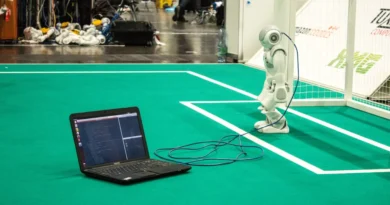5 Ways to Reduce The Negative Effects Of Online Learning?
Children’s emotional and social health has been impacted by a two-year time spent largely online in the school system. There are many negative effects of online learning caused in recent years. Increased technology use has been linked to a decline in children’s reading, critical thinking, and interpersonal skills.
As long as it is used as a tool and not as a way of life, modern technology has the potential to assist students in their academic endeavours. In this essay, we’ll talk about the dangers of technology overuse and what we can do to avoid them.
Recent research shows that the widespread usage of smartphones by children during pandemics has exacerbated the appearance of post-traumatic symptoms. Quality of sleep and ability to recall information has also been negatively affected. Additionally, online schooling has seen growth in the last two years, allowing many more youngsters to learn at their own pace instead of being confined by traditional school walls.
Online schooling has increased the time kids spend in front of a computer, tablet, or smartphone, according to data from 39 per cent of the US population aged 5 to 8 years old. Parents and children have instantly seen the negative impacts of this increased time spent using technology, which include issues with focus, sleep deprivation, burnout, and overall stress.
Obesity, cardiovascular disease, muscle loss, and decreased mobility are just some of the physical health consequences that have resulted from a lack of physical activity in youngsters. Despite the dire consequences of this condition for children’s mental and physical health, parents and community members may work together to safeguard them. Listed below are the possible side effects of excessive technology usage and how to avoid them.
Technology’s effect on people’s health in general
Children can be exposed to mental health difficulties, especially via social media, such as depression and social anxiety. According to Facebook research, the picture-perfect image can lead to low self-esteem and an increased risk of suicide owing to sadness and issues with self-worth. AI algorithms also play a role in the design of technological gadgets, allowing for easier access to online material via the use of auto-correct AI’s, auto-filling text, or a streamlined interface to access gadgets with one click. The brain becomes accustomed to using only a small proportion of its potential through these many simplifications. When it comes to children’s mental health, what are the actual harmful consequences of technology?
Also Read: What is Mike Singletary’s Net Worth?
1) Distorted self-image
At six months, according to a psycho-analytical hypothesis, children enter the mirror stage. Self-identity is developed at the mirror stage when the kid can identify themselves in the mirror as an individual. The capacity to rationalise oneself as a person with specific characteristics may be lost in children who use technology regularly from an early age.
For example, young girls who follow the social media accounts of celebrities may have the mistaken belief that if they imitate their conduct, they will one day look and live like the superstars they see on social media. This group of young girls may end up wearing and posing in a way that is not acceptable for their age, and they may reject the natural contrasts between their real bodies and the distorted, false picture of their bodies when they are older.
Counter-attack:
- Parents may snap photos of their children without any editing and give them compliments on their beauty.
- Teach youngsters the value of privacy and the dangers of disclosing personal information about themselves on the internet.
- It is important to teach youngsters about the good aspects of variety, such as the fact that people should not all look and act alike.
2) Analphabetism
Artificial intelligence (AI) is used to auto-correct or auto-fill textual text in smartphones and computer applications. To put it another way, this prevents youngsters from utilising language appropriately because it limits the brain’s ability to connect sounds and letters or symbols logically.
Counter-attack:
- Create a reading plan for classic literature;
- Parents should set a good example for their children by speaking clearly and grammatically accurate around them.
- Engage in conversation and foster debate with youngsters about themes that they find interesting;
3) Reduced ability to think critically
Children aren’t encouraged to think logically or mathematically since technology makes everything simpler, so they won’t be able to link, compare, or contrast things.
Counter-attack:
- Puzzles, chess boards, and other physical games like Rubik’s cubes should be available for students to play;
- Engage your youngster in mind-boggling activities.
- Your youngster may learn arithmetic through participating in everyday tasks like grocery shopping or cooking, which involve the use of mathematical processes.
4) Empathy deficit
As a result of playing virtual reality games, children are given the notion that their actions don’t damage other people or animals or that if they do put themselves in danger, they can always “restart” the game. There is a risk that this concept will inspire youngsters to engage in risky behaviour.
Counter-attack:
- Encourage youngsters to get their hands dirty in the garden (this teaches them to be gentle with nature and to respect it). As the plants develop, they’ll gain self-confidence, feel more at ease, and have a greater sense of accomplishment.
- Involve youngsters in animal shelter volunteer activity;
5) Physical infirmity
Too much research has shown that excessive use of computers and other technology gadgets hurts muscle development and healthy body postures. Bone and muscular disorders, such as arthritis, cervical spine discomfort, spinal disc herniation or cardiovascular disease can also be found in younger generations of technology users. Diseases that used to manifest themselves in people in their 50s and 60s are now appearing in people as young as 20.
Counter-attack:
- Plan to spend more time outside, whether it’s taking short walks or going on longer hikes or treks;
- Participate in sports with your children, such as rock climbing or swimming.
- Play games like hide and seek, jump rope, and hopscotch with your kids.
Aside from cutting back on our use of technology, the simplest method to counteract and minimise its bad influence on our general health is to spend more time outdoors in nature, as well as spending more time with others. Children learn best by seeing their parents and other adults engage in enjoyable activities that don’t include the use of technology. When they witness their parents doing this, they are more likely to swap out unhealthy activities for good ones.


